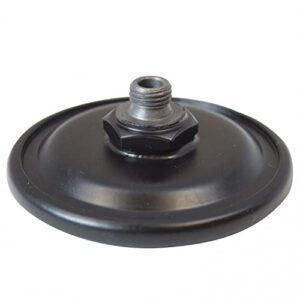Understanding the Silverado ground wire location is crucial for proper maintenance and troubleshooting. The ground wire plays a vital role in the electrical system of your Chevy Silverado.

It serves as the pathway for electrical currents to return to the battery or power source, completing the circuit. Various electrical components may malfunction without proper grounding, leading to potential issues and headaches. We will explore the different Silverado ground wire locations on a Chevy Silverado
In this blog post, we will explore the different Silverado ground wire locations on a Chevy Silverado and the importance of knowing them.
Table of Contents
Chevy Silverado Ground Wire Location
What is the Chevy Silverado Ground wire Location? In answer to this, the locations are given below:
- Chevy Battery: One of the primary ground wire locations is at the battery. The negative terminal of the battery is connected to the vehicle’s chassis, providing a direct path for electrical currents.
- PCM (Powertrain Control Module): The PCM ground is essential for the proper functioning of the engine control unit. It is usually connected to the engine block or chassis.
- A-Pillar Ground: The A-pillar is the vertical support between the windshield and the front door. Ground connections can sometimes be found here.
- Engine Block: The engine block itself serves as a significant grounding point due to its direct connection to the chassis.
- Wiring Harness: Throughout the vehicle, you’ll find multiple ground points in the wiring harness, ensuring that various electrical components are properly grounded.
- Under Driver/Passenger Seat: Some Silverado models may have ground connections under the driver or passenger seats for specific components.
- On B/C-Pillars Inside the Cabin: Similar to the A-pillar, the B and C-pillars on the sides and rear of the cabin may also contain ground connections.
- Spare Tire Hoist Bracket: In some cases, you might find a ground wire attached to the spare tire hoist bracket.
- Instrument Panel Under the Knee Bolster: The instrument panel area, located beneath the knee bolster, could house ground connections.
- Radiator Core Support: The radiator core support might serve as a ground location, providing a direct path to the chassis.
- Fuel Filler Neck: In certain Silverado models, a ground wire can be found near the fuel filler neck.
Why is it essential to locate the Silverado ground wire on a Chevy?
Knowing the Silverado ground wire in your Chevy Silverado is vital for several reasons:
- Troubleshooting Ground Faults: When you encounter electrical issues, identifying and inspecting the ground connections can help diagnose the problem. Loose, corroded, or broken ground wires can lead to a wide range of malfunctions.
- Preventive Maintenance: Regularly checking and maintaining ground connections can prevent potential electrical problems, ensuring that your vehicle’s electrical system functions optimally.
- To Replace Corroded or Broken Wires: Over time, ground wires can corrode or become damaged, leading to weak electrical connections. Identifying these issues allows you to replace faulty wires, restoring proper functionality.
Can we use the owner’s manual to locate the Silverado ground wire on a Chevy?
While the owner’s manual provides valuable information about your vehicle, it might not give specific details about each Silverado ground wire location. It typically covers essential maintenance and general information but may not delve into intricate electrical details. For precise ground wire locations, it’s advisable to consult vehicle repair manuals, and wiring diagrams, or seek guidance from qualified automotive professionals.
What can a bad engine ground cause?
A bad engine ground in your Chevy Silverado can cause various electrical problems, including:
- Electrical Component Malfunction: When the ground connection is weak or disrupted, electrical components such as lights, sensors, and ignition systems may not function correctly.
- Starting Issues: A weak ground connection can hinder the starting process, leading to slow cranking or difficulty in starting the engine.
- Electronic Control Unit (ECU) Problems: The ECU relies on a proper ground connection to send and receive signals. A bad ground can result in errors or malfunctions in engine management.
- Electrical Noise and Interference: Inadequate grounding can cause electrical noise and interference in audio systems, radios, and other electronics.
- Battery Drain: If a ground connection is faulty, it can lead to increased battery drain when the vehicle is not in use.
How do I find a bad ground in my car?
Finding a bad ground in your Chevy Silverado requires careful inspection and testing. Here are some steps to help you identify and rectify the issue:
- Visual Inspection: Examine the ground wires for signs of corrosion, damage, or looseness. Pay attention to where the wires connect to the chassis or other components.
- Multimeter Testing: Using a multimeter, set it to the resistance (ohms) mode and check the continuity between the ground point and the negative terminal of the battery. A good ground should have minimal resistance.
- Wiggle Test: While the vehicle is running, gently wiggle the ground wires and connections. If you notice fluctuations or changes in performance, it indicates a loose or faulty ground.
- Cleaning and Tightening: If you find any corrosion or loose connections, clean the contact points and securely tighten the ground wires.
- Professional Inspection: If you’re unsure or unable to perform the above steps, it’s best to seek assistance from a qualified mechanic or automotive technician.
How do you fix a ground problem in a car?
Fixing a ground problem in your car, including a Chevy Silverado, involves the following steps:
- Identify the Issue: Use the methods mentioned earlier to identify the problematic ground connection.
- Clean the Connection: If there’s corrosion or dirt, clean the ground contact points using a wire brush or an appropriate cleaner.
- Tighten the Connections: Ensure that all ground wires are securely fastened to their respective points.
- Replace Faulty Wires: If the ground wire is damaged beyond repair, replace it with a new one of the correct gauge and length.
- Retest: After making the necessary repairs, retest the electrical components to ensure proper functioning.
- Perform Preventive Maintenance: Regularly inspect and maintain ground connections to prevent future issues.
Will a bad ground cause slow cranking?
Bad ground can cause slow cranking Silverado ground wire in your Chevy Silverado. The starter motor relies on a robust ground connection to draw the necessary current from the battery. If the ground is weak or interrupted, the starter motor won’t receive sufficient power, leading to slow or hesitant cranking when you start the engine.
Is it better to ground to the battery or chassis?
In most cases, grounding to the chassis is preferred over grounding directly to the battery. The chassis provides a larger, more stable ground pathway, allowing for better distribution of electrical currents throughout the vehicle. Grounding to the battery may lead to localized grounding, which could result in unequal electrical potential across different components.
Can a bad ground cause an alternator not to charge?
Yes, a bad ground can cause the alternator not to charge properly. The alternator relies on a solid ground connection to complete the charging circuit. If the ground connection is weak or broken, the alternator may not be able to deliver sufficient power to recharge the battery and supply electricity to the vehicle’s electrical systems.
Summary
Understanding the Silverado ground wire in your Chevy Silverado is crucial for maintaining a well-functioning electrical system. Key ground points can be found in various areas, including the battery, PCM, A-pillar, engine block, and wiring harness. Regularly inspecting and maintaining ground connections can help prevent electrical issues and ensure your vehicle operates smoothly. If you encounter any electrical problems, checking the ground connections should be one of the first steps in your troubleshooting process. Remember to consult repair manuals or seek professional help for precise ground wire locations and repairs.
Stay connected with Motor Vehicle Geek for more valuable vehicle information.



